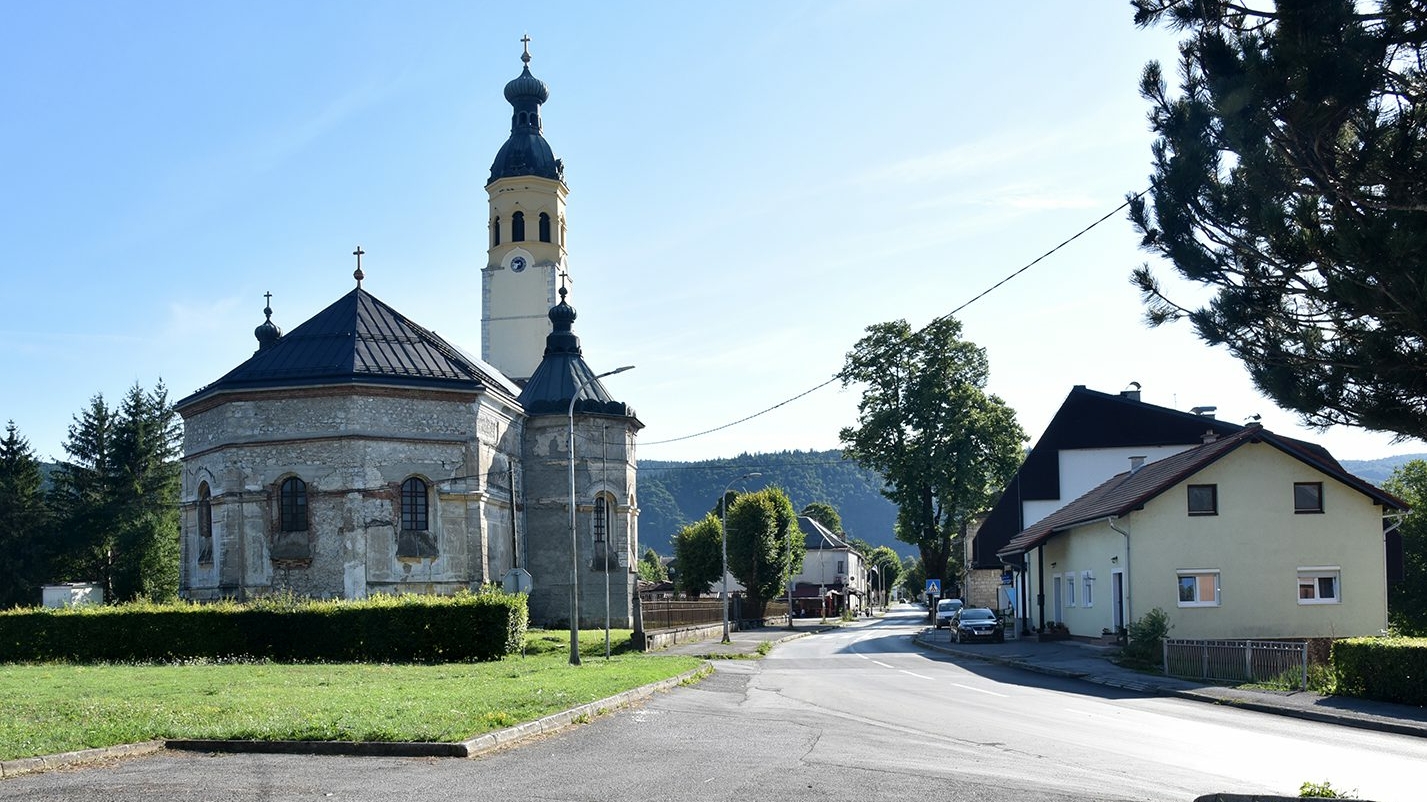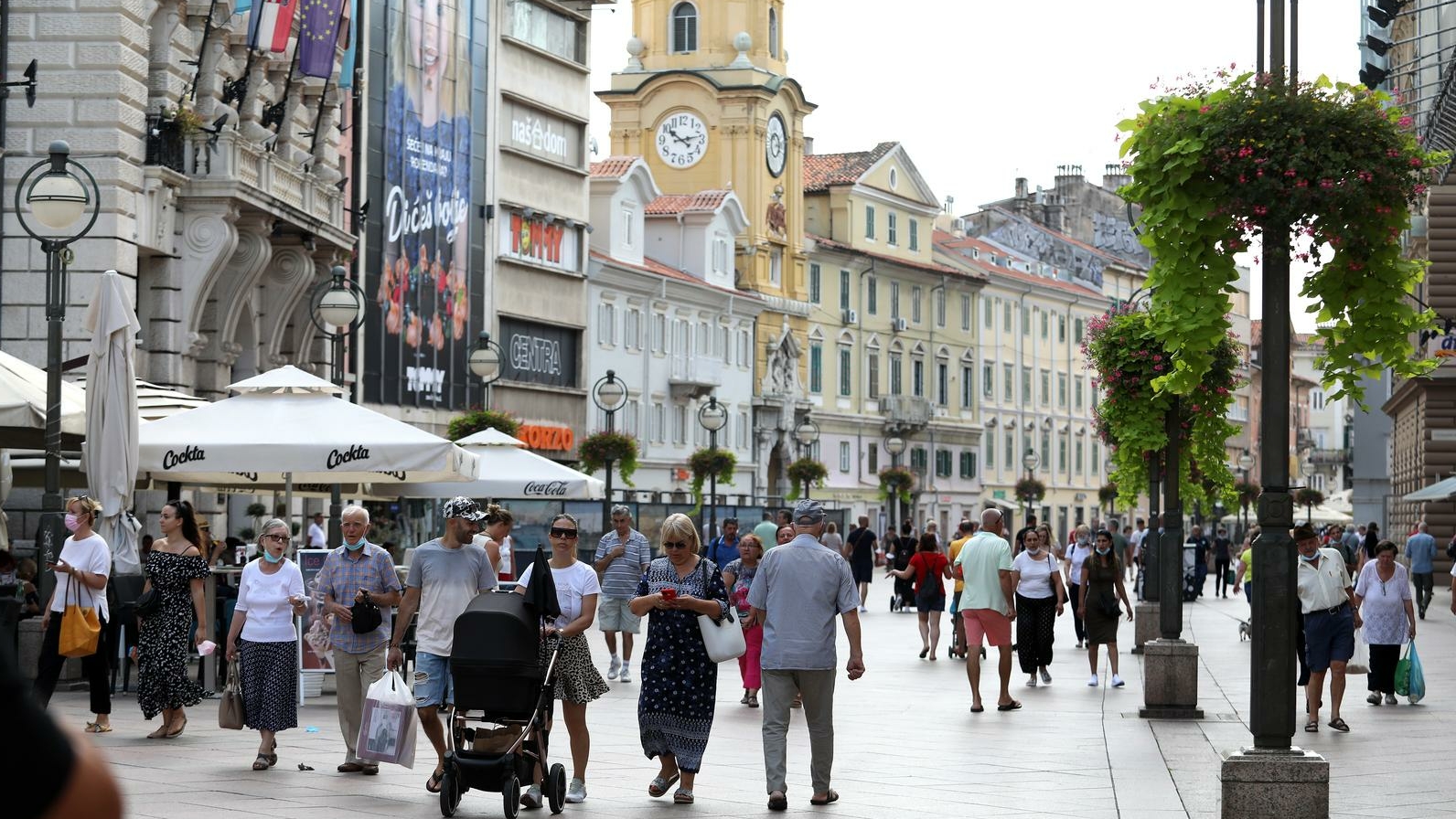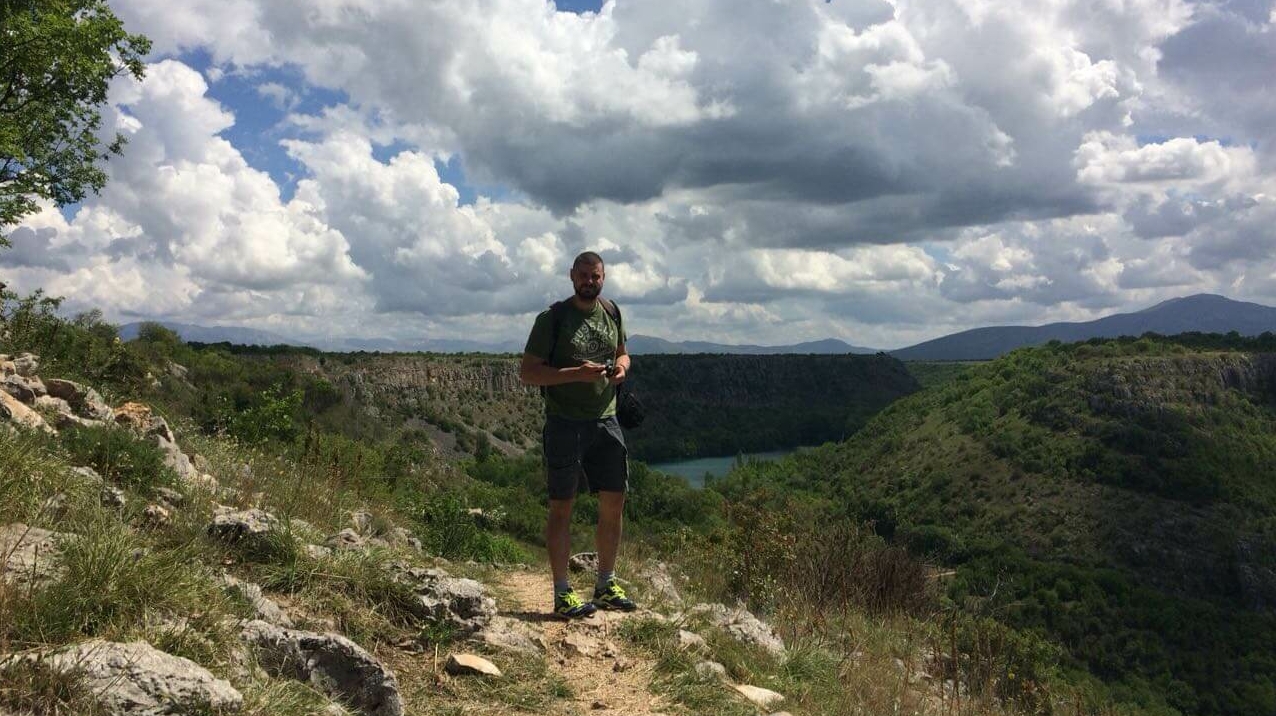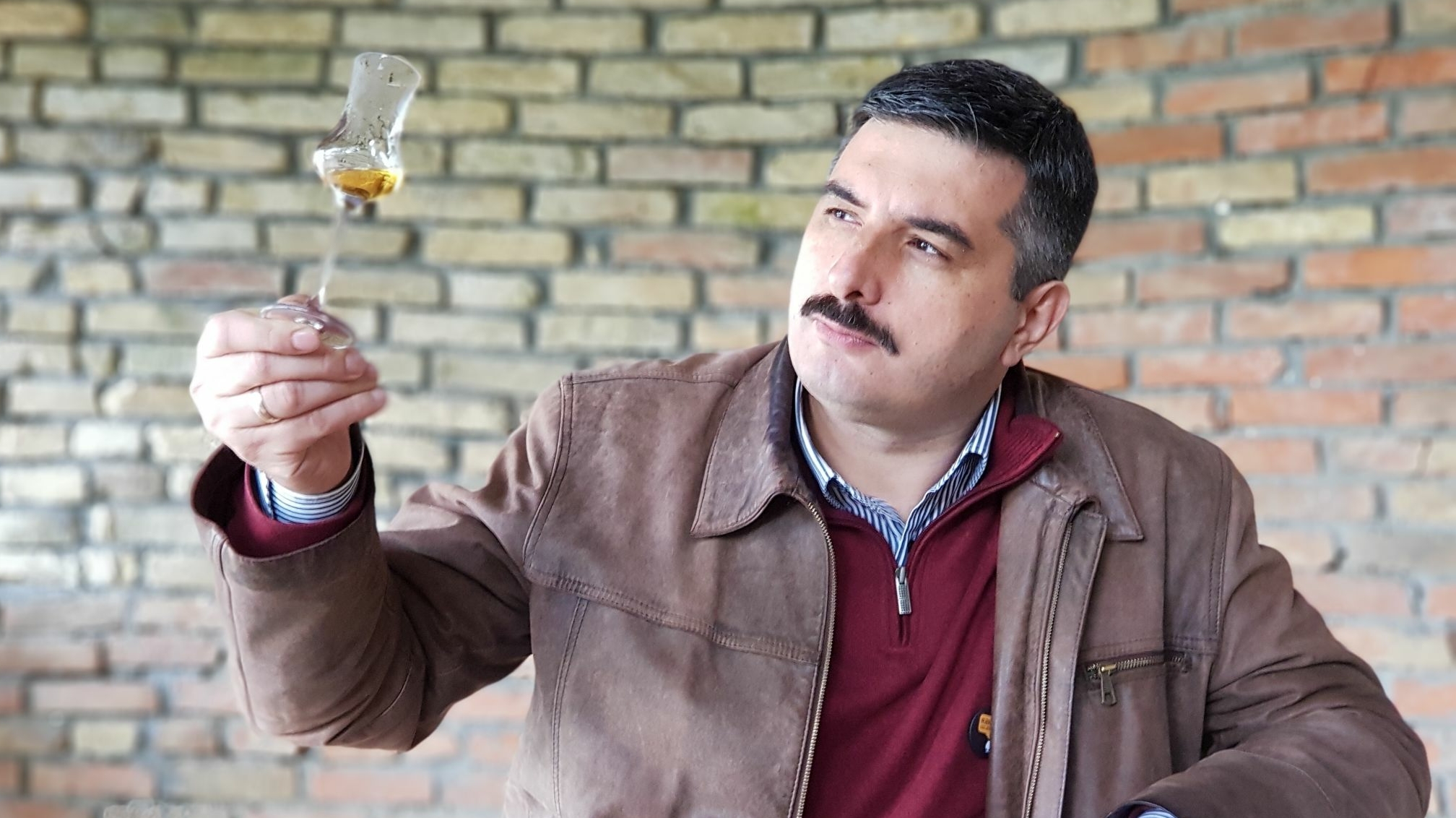“The first to come here after the last war were refugees from Bosnia; then came profiteers who wanted to make money trading in land; and last came the third generation, the ‘New Agers’ – urban people who wanted to live in the countryside and the nature, but most of them gave up on that. Not everyone made it because – the valley chooses,” says Branko Šupica, the president of the International Ceramics Center Atelier Janja Gora, a civil society organization he and his family founded and manage in this village in the Plaško Valley. Šupica moved back from the Netherlands; he welcomed us on his estate, the headquarters of his organization.
We came to Plaški because of a communal dispute and came back full of impressions from meeting people. We did not expect to see what we saw in Janja Gora when we headed to that place in Lika.
“Everyone said we were crazy because people go abroad to work, and we came back from the Netherlands to a village in the middle of nowhere,” adds Branko’s wife, Danijela Pešut, who just concluded an important business deal – the production of pottery for the restaurant that is supposed to open in the neighborhood. “The next 30 days you cook,” she said to her husband.
The owner of the restaurant is Matija Rendić, the well-known Croatian chef and owner of the restaurant Apetit in Zagreb, who came to Janja Gora and the family Šupica-Pešut at the same time as we in order to see the samples of pottery Danijela prepared for him. Of course, we could not miss the chance to ask Rendić what kind of restaurant he is opening, plainly put, in the middle of nowhere.
“It will be a restaurant with a Michelin star and 95 percent of homegrown groceries, all done according to the instructions of Rudolf Steiner,” says Rendić.
“Steiner was an Austrian philosopher, or, better said, mystic, who was born in 1861 in Međimurje and died in 1925 in Switzerland. He is the founder of anthroposophy, the teaching that there is no boundary between, as the Croatian Encyclopedia says, the “created and uncreated world”, and which advocates for the spiritual enlightenment of the individual. One of the many areas Steiner wrote about is the so-called biodynamic agriculture, of special interest to our interviewees in Janja Gora. It represents “a personal relationship between the farmer and the plants, animals, soil and even the manure in a holistic approach to agriculture.” Today, the biodynamic movement includes thousands of regenerative gardens, farms, orchards and vineyards in a wide range of climates, ecological contexts and economic conditions on all the continents of the world.
“We will work on the project for the restaurant for a year. A large villa with a pool made of natural materials will be built using Croatian design. A dowser is coming to find water. I expect that people from all over the world will come to the restaurant, which will be of a higher price range. We ordered the tableware from Šupica, and we will buy locally-grown vegetables and support the local community – we will all work together. We will have a restaurant serving the best local products and our own dairy,” Rendić says and adds that he has rarely seen such a concentration of beauty and life in one place.
From the Iapydes to Tesla
The sculpture park Šupica is going to build on his estate – surely with the help of his son Igor, who studies sculpture – will, he says, be dedicated to Steiner, ancient Slavic mythology, the Iapydes, who inhabited this area in Roman times, the inventor Nikola Tesla, who has family ties to Plaški, and – Viktor Schauberger, the Austrian forester.
However, Rendić is not the only one coming to Janja Gora. Danijela Pešut reveals to us that in their neighborhood there is a doctor of Indian medicine, a Croatian diplomat and film director who escaped the city bustle and an Indian yogi from London who leased the entire village of Plaščanski Begovac and established a yoga center. For many years, the Atelier has organized workshops of ceramic production attended by people from all over the world.
“My daughter is in high school in Zagreb. She is in a program for nature protection technicians and is receiving a scholarship from the Serbian Business Association ‘Privrednik’. Indirectly it is connected to our atelier, which is an art story, but first and foremost a local story,” Šupica reveals.
She shows us the kiln. “It is heated up to 1350 °C when we make ceramics,” she says.
The International Ceramics Center Atelier Janja Gora was opened in 2006, when the first ceramics workshop with some fifteen attendees was organized.
“Before that, we lived in the Netherlands for 12 years. This is my wife Danijela’s family home, which was never finished, and I myself am a native of Latin, but my house is in Plaški. We came back from the Netherlands where we went as refugees in 1991. I worked various jobs in the Netherlands, and lastly as a graphic designer. The heart led me back here. I cannot explain in any other way why we came back and left the stable and comfortable Western way of life. The plan was to do graphic design and let rooms from here. However, I offered that in 2004, when it was still too early, so I became a tourist guide and started working with ceramics. We have something to show to the world, so I designed a tourist project. We combine history, nature and the active community – the ceramics atelier, art atelier and similar. Plitvice lacks the authentic community, which is not the case here,” Šupica explains and adds that they protect natural heritage here by developing “non-invasive tourism.”
“Ceramists from all over the world come here, and we also travel to exhibitions. Some friends from Belgium did a project of making Japanese teacups in 2005 and organized 20 exhibitions from Japan to Boston. Nothing has been happening in the last two years because of the coronavirus crisis. Two years ago, we hosted 50 artists in a project designed to raise awareness about the importance of water. We already have a collection which can be displayed in the Classroom,” says Šupica referring to the old, abandoned and derelict school building in the center of Plaški, built in the late 19th century in the historicist style, where classes were held until the 1990s.
“The initial idea was to make Janja Gora a craft-village, a village of crafts and skills, and now we have supplemented it with spirituality, with a space where every individual will have a chance for self-fulfillment. The goal is to establish a center of ancient knowledge and skills. We want to teach participants ceramics and other skills as well,” Danijela Pešut adds.
Against unnecessary technology
Danijela’s and Branko’s daughter Tara Šupica, who recently gave birth at home, says she will be involved in the project.
“I will teach obstetrics and motherhood as well as gardening within the center for ancient knowledge. Pregnancy is not a disease that happens but a holy force lived by the woman, a portal that brings a new world. The system of giving birth in hospital conditions is based on science, and no other mammal gives birth under neon lights and surrounded by strangers. If the body knows how to create life, it knows how to give birth to it, too. I do not want what I do not need from technology,” says Tara Šupica and adds that she went to the doctor only once during her pregnancy.
In answer to our remark that it all reminds us of Charles Manson’s hippy commune in California, she says that it is a stereotype.
“We will never go to the city to promote our ideas to others,” says Tara Šupica.
Going to Plaški, we had no idea Janja Gora was the scene of such a full and dynamic life. We knew it primarily as the birthplace of Omer Pasha Latas, a convert to Islam born as Mihajlo Latas and the commander-in-chief of the Turkish army celebrated for quelling rebellions in Ottoman provinces. Our surprise was even greater given that we headed to Janja Gora from Karlovac, which has two historical figures in common with Plaški and Janja Gora. These two figures were portrayed in the novel Omer Pasha Latas by the Nobel laureate Ivo Andrić and are further connected by two important anniversaries this year. Two hundred years from the birth of the painter Vjekoslav Karas from Karlovac was marked with an exhibition of his works in the Vjekoslav Karas Gallery, while the 150th anniversary of the Turkish commander, also this year, was not marked in any way. Karas traveled to Bosnia and Herzegovina to portray the celebrated commander, but the fate of the paintings he made there is unknown – they all disappeared.
With education and creativity against unemployment
“I am writing a book about moving to Plaški,” Isidora Ralić, who moved from Rovinj five years ago after marrying a Plaški native, surprises us. We find her in the headquarters of the organization “Teaching Center for Tradition and Creativity,” which is responsible for the building of the former school becoming protected cultural heritage. Isidora is the president of this civil society organization, which employs 11 caretakers for the elderly. She still has not employed herself, so she volunteers.
“I wanted to create a platform to educate and employ the local community because unemployment is a big and chronic problem of this region. We opened these premises in April; we promote local products and local content. Here you can find out what the Plaško Valley has to offer. We have several family farms and an international ceramics atelier, and we also collect wild medicinal plants, organize workshops for children and fieldwork. This makes us self-sustaining. All the income from the sale of products in the last eight months goes to the caretakers’ salaries. Until recently, we had one employee, and within the project “Zaželi” we have employees, trained caretakers who visit the elderly and bring them food, pay the bills, take them for walks, tidy up for them and so on. The project’s value is 927,000 kuna. The European Union is the sole financer of the project, which has been in operation since September,” Isidora Ralić explains.
“Plaški is challenging and that is what drew me to this place. The lack of content and opportunities for socialization for children, as well as the lack of employment opportunities after education, is what got my interest.”
“If you possess the knowledge and skills for a creative life in nature, you can survive in these rural communities and have a nice life,” Isidora Ralić believes.
Six baptisms and 50 funerals last year
“There were 15 baptisms in Plaški in 2019, and six in 2020. We have had two baptisms this year. There were 50 funerals in each of the years 2018, 2019 and 2020,” presbyter Saša Kremić, who we find in the Church of the Entry of the Most Holy Theotokos into the Temple, tells us.
His parish is huge, encompassing 350 households in a wide and sparsely populated area.
“This church’s feast is Vavedenje (the Entry of the Most Holy Theotokos into the Temple), celebrated on December 4, and the other dedication is to the Intercession of the Theotokos, when the faithful fast and receive Communion,” adds Kremić, born in 1991, who came here from Prijedor.
The Karlovac Eparchy was established in 1711, and its first seat was the Gomirje Monastery. From 1721 to 1941, when bishop Savo Trlajić was killed, the seat of the eparchy was in Plaški, and later it was in Karlovac. The Church of the Entry of the Most Holy Theotokos into the Temple was built from 1756 to 1763 under the leadership of bishop Danilo Jakšić and according to the project of Janko Holjac, while the iconostasis was made by Ivan Tišov. The renowned architect Josip Stiller built the bishop’s residence in 1784, but it was burned in the Second World War and completely removed in the 1970s.
From 1744, there was an Orthodox seminary and an ecclesiastical court in Plaški. Milutin Tesla, the father of the inventor Nikola, attended the seminary here, and Nikola’s sister Marica Kosanović, an educated and progressive woman in those times, contributor to newspapers Srbobran and Budapester Tagblam, who spoke perfect German, Italian, French and Czech, lived here. She married the priest Nikola Kosanović in Plaški, and their son Sava Kosanović was a noted politician, publicist and diplomat.
Describing the childhood of Omer Pasha Latas, Ivo Andrić writes that the boy and young man Mihajlo Latas, very occupied with his own potential and ambitions, despised Plaški and Janja Gora believing they were an obstacle to the achievement of his dreams. This eventually led him to flee to Turkey and achieve a brilliant military career and the glory of Omer Pasha. However, a longer visit to this place in the furthest south of the Karovac County was not enough – 12 hours was too short to find out about all Plaški has to offer, its interesting possibilities and challenges. Danijela Pešut may be on the right track – in the 21st century, one should not flee from Plaški, but build one’s life in Plaški, if the valley allows it.
Translation from Croatian: Jelena Šimpraga








